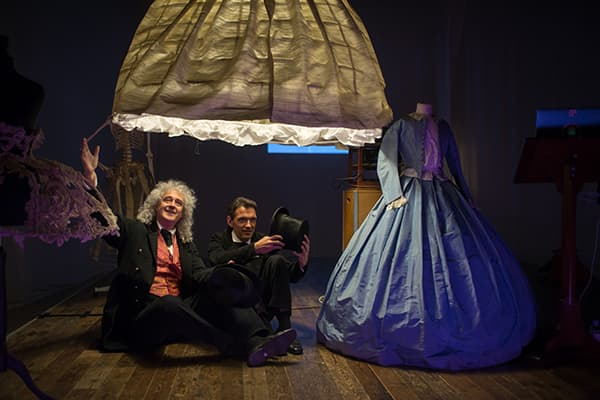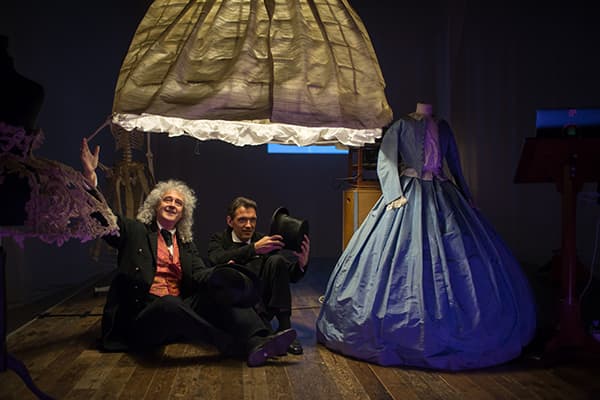
Brian May and Denis Pellerin dressed up in Victorian attire for the launch of their new book.
Crinoline: Fashion’s Most Magnificent Disaster, which launched last week, is hailed as a ‘3-D exploration of one of fashion’s most disastrous yet most celebrated garments’.
The book comes with a 3-D viewer called the Owl – a stereoscopic device patented by Brian May, a passionate photography enthusiast perhaps better known for his role as lead guitarist of the rock band Queen.
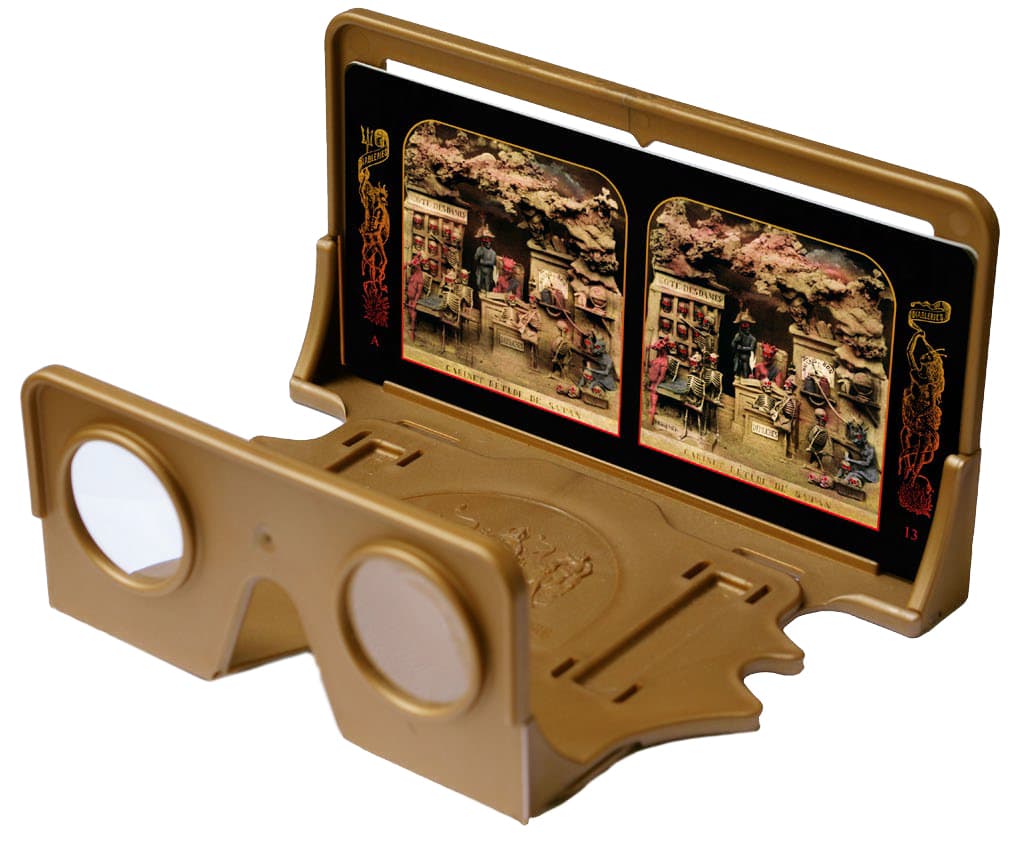
The Owl – a stereoscopic device patented by Brian May
The book charts the history of crinoline, the Victorian undergarment, from its initial rise in popularity in 1856 through to the late 1860s, when it fell out of favour as women began to protest against this ‘cage’, right through to its reinvention by contemporary fashion designers such as Alexander McQueen, Zandra Rhodes and Vivienne Westwood.
May and Pellerin have spent decades sourcing and restoring original stereo cards, that are reproduced in their book and can be viewed as they originally would have been, using May’s Owl stereoscope.

A multicoloured harlequin Mini Crini and a corset. Collection: Voyage to Cythera
Vivienne Westwood. Season: Autumn/Winter 1989–90.
What is stereoscopy?
Stereoscopy is the technique of creating the illusion of depth by producing two identical images laid side to side, and using a binocular device to view both at the same time – one through each eye – to create the appearance to the viewer of a single three-dimensional image. In other words, it’s 3-D.
Stereoscopy and crinoline: what’s the connection?
The stereoscope became a craze with the Victorian masses at around the same time that the voluminous crinoline underskirt became a popular item of fashion, meaning a wealth of stereoscopic images were in circulation at that time, focusing on, and often deriding, the large hooped underskirts.

Crinolines, we learn from May and Pellerin’s book, were actually dangerous and hugely impractical; they were often at the mercy of strong gusts of wind flashing women’s undergarments, caused accidents and were a serious fire hazard. This made them a good target for a number of humorous stereoscopic images, and gaining the legacy of being ‘fashion’s most disastrous yet most celebrated garments’.
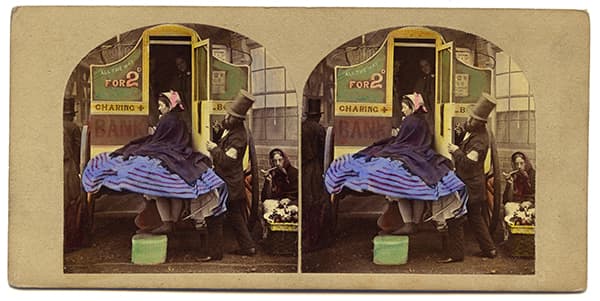
Where it all began
May’s interest in stereoscopy started when he was a child, finding 3-D cards given away with breakfast cereal. He soon figured out how to make his own stereoscopic images and since then it’s been a lifelong passion for him.
May designed his own Owl stereoscope – named because it looks… well, like an owl – which is now produced in large quantities and has become a standard around the world in stereoscopic viewing. In 2011, May met the French scholar Denis Pellerin, one of the world’s experts on French and English photographic history, and together they have collaborated on a number of stereoscopic books.
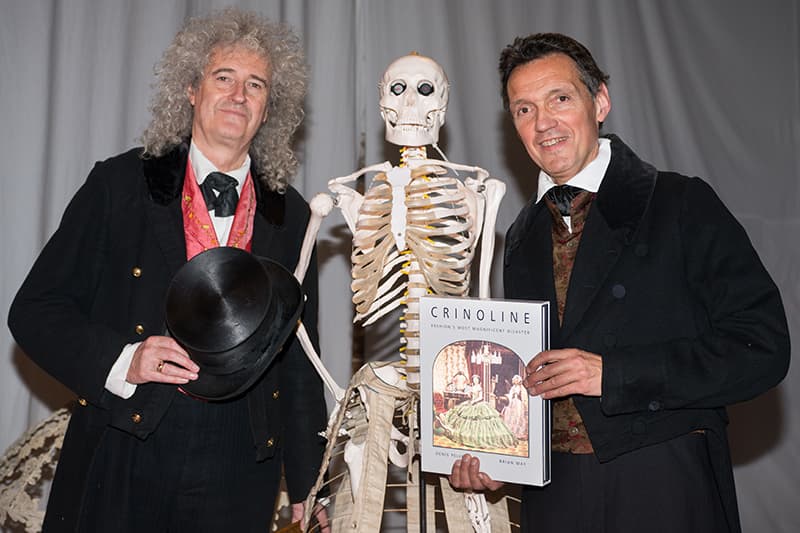
Brian May and Denis Pellerin with their new book Crinoline: Fashion’s Most Magnificent Disaster
In a joint statement, May and Pellerin described their reasoning behind the book’s theme:
‘Crinolines and stereoscopic photographs were twin sensations of the mid-19th century. We, the authors of this book, decided it was fitting that they should be reunited in the 21st century, and their intimate association recognised at last. This book explores the history of crinoline “in depth”. It’s also an attempt to fathom the unique appeal of this dangerous fashion, which, surprisingly, is alive and well in the present day, and its place in popular culture.’
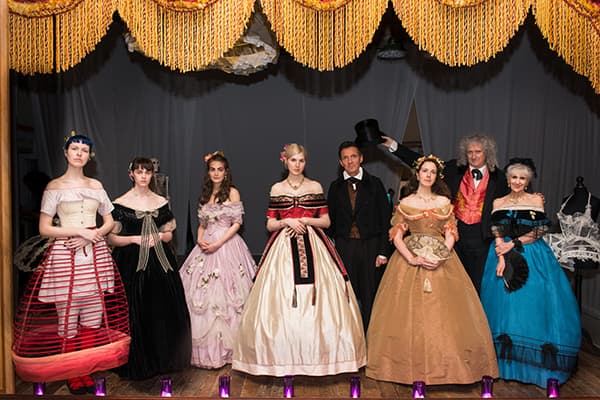
‘Crinoline: Fashion’s Most Magnificent Disaster’, by Brian May & Denis Pellerin, published by The London Stereoscopic Company, £50 www.londonstereo.com
The book was published on 14 April, to coincide with the V&A exhibition, Undressed: A Brief History of Underwear.

Crinoline: Fashion’s Most Magnificent Disaster

